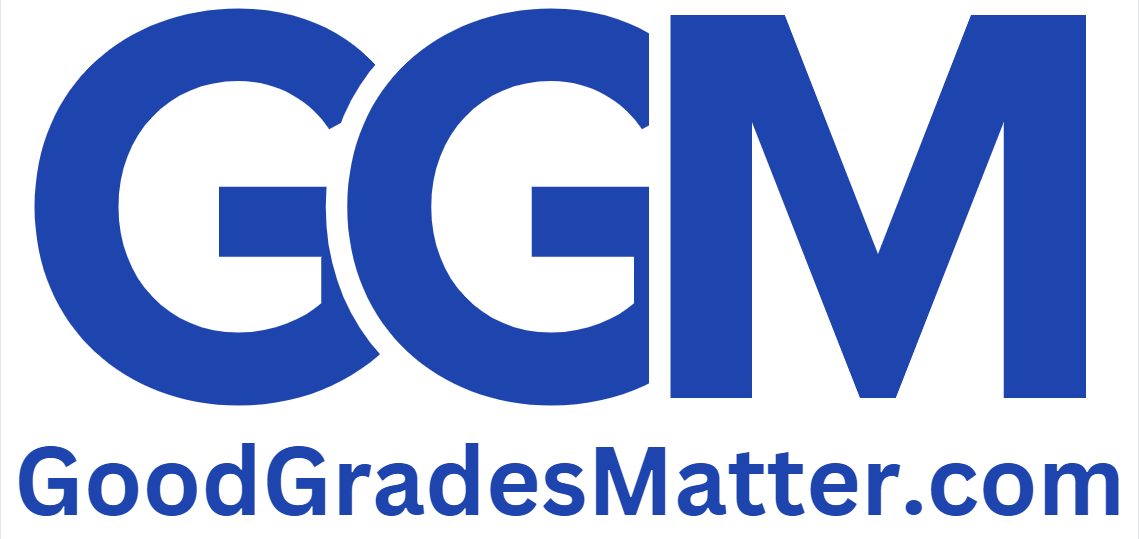| Term | Definition |
|---|
| Acute Care | A branch of secondary health care where a patient receives active but short-term treatment for severe injury, an urgent medical condition, or during recovery from surgery. |
| Advanced Practice Registered Nurse (APRN) | A nurse with post-graduate education in nursing, prepared with advanced didactic and clinical education, knowledge, skills, and scope of practice. |
| Ambulatory Care | Care provided on an outpatient basis, with many surgeries and treatments now offered without requiring hospitalization. |
| Assisted Living | A system of housing and limited care designed for senior citizens needing assistance with daily activities but not requiring nursing home care. |
| Bioethics | The study of ethical issues arising from advances in biology and medicine, involving moral discernment related to medical policy and practice. |
| Cardiology | The study and treatment of disorders related to the heart and blood vessels. |
| Certified Nurse Assistant or Aide | An individual who assists patients with direct health care needs, often under the supervision of a nurse. |
| Chronic Care | Care and treatment for individuals with long-term health problems. |
| Clinical Judgment | The interpretation or conclusion about a patient’s needs, concerns, or health problems, leading to decisions on actions or adaptations to care. |
| Clinical Nurse Specialist (CNS) | An advanced practice nurse providing expert advice related to specific conditions or treatment pathways. |
| Code of Ethics | A set of guiding principles defining the philosophical ideals of right and wrong in providing patient care. |
| Critical Care | Specialized care for patients with life-threatening conditions requiring comprehensive care and constant monitoring, typically in intensive care units. |
| Critical Thinking | The ability to analyze and evaluate issues to form judgments; essential for professional accountability and quality nursing care. |
| Cultural Competence | The ability of healthcare providers to deliver care tailored to the diverse values, beliefs, and needs of patients. |
| Delegation | The process by which a nurse directs another person to perform nursing-specific tasks. |
| End-of-Life Care | Care given to individuals near the end of life, focusing on pain control and comfort, including physical, emotional, and spiritual support. |
| Evidence-Based Practice (EBP) | The integration of clinical expertise, patient values, and the best research evidence into decision-making for patient care. |
| Geriatrics | The branch of medicine dealing with the health and care of elderly people. |
| Health Literacy | The capacity to obtain, process, and understand basic health information and services for making informed health decisions. |
| HIPAA | The Health Insurance Portability and Accountability Act, which provides privacy and security provisions for safeguarding medical information. |
| Holistic Care | A healing approach that considers the whole person—body, mind, spirit, and emotions—in pursuit of optimal health and wellness. |
| Home Health Care | Health care services delivered in a patient’s home to promote, maintain, or restore health. |
| Homeostasis | The body’s tendency to maintain a condition of balance or equilibrium within its internal environment despite external changes. |
| Hospice Care | Care focused on the palliation of pain and symptoms for chronically, terminally, or seriously ill patients, addressing their emotional and spiritual needs. |
| Infection Control | Procedures to prevent healthcare-associated infections, including hand hygiene and sterilization. |
| Informed Consent | The process by which a fully informed patient participates in choices about their healthcare. |
| Inpatient Care | Healthcare received when a patient is formally admitted to a facility like a hospital or nursing home. |
| Interdisciplinary Team | A group of healthcare professionals from diverse fields working together toward a common goal for patient care. |
| Licensed Practical Nurse (LPN) | A nurse who has completed a practical nursing program and is licensed to provide routine patient care under a registered nurse or physician. |
| Long-Term Care | Services that help meet medical and non-medical needs of individuals with chronic illnesses or disabilities who cannot care for themselves. |
| NCLEX | The National Council Licensure Examination, a nationwide exam for licensing nurses in the U.S. and Canada. |
| Neurology | The branch of medicine dealing with disorders of the nervous system. |
| Oncology | The branch of medicine specializing in the diagnosis and treatment of cancer, encompassing medical, radiation, and surgical oncology. |
| Outpatient Care | Medical care or treatment that does not require an overnight stay in a hospital or facility. |
| Palliative Care | A multidisciplinary approach to specialized care for people with life-limiting illnesses, focusing on relief from symptoms and stress. |
| Patient Advocacy | The act of speaking out for patients’ rights and health, helping them communicate with healthcare professionals. |
| Patient-Centered Care | A healthcare approach that sees the patient as an individual, considering their preferences and values in all health decisions. |
| Pediatrics | The branch of medicine dealing with health and medical care for infants, children, and adolescents. |
| Pharmacology | The study of drugs and their effects on the human body, crucial for nursing as medications are key in treatment plans. |
| Primary Care | Health care provided by medical professionals as the first point of contact, often involving referrals to specialists. |
| Psychiatry | The branch of medicine focused on the diagnosis, treatment, and prevention of mental, emotional, and behavioral disorders. |
| Quality Improvement (QI) | A systematic approach to analyzing and improving practice performance. |
| Quaternary Care | An extension of tertiary care involving highly specialized medical services. |
| Registered Nurse (RN) | A nurse who has graduated from a nursing program and obtained a nursing license. |
| Rehabilitation | The process of helping individuals restore lost skills and regain maximum self-sufficiency after illness or injury. |
| Residential Care | Long-term care provided in a residential setting rather than at home. |
| Scope of Practice | Defines the procedures, actions, and processes that a healthcare practitioner is permitted to undertake according to their professional license. |
| Secondary Care | Healthcare services provided by medical specialists who have specific expertise in treating certain conditions. |
| Skilled Nursing Facility | A nursing home recognized by Medicare and Medicaid systems to meet long-term healthcare needs. |
| Subacute Care | Care that is more intensive than traditional nursing care but less than acute care. |
| Telehealth | The use of digital information and communication technologies to access health care services remotely. |
| Telemetry | The application of technology to monitor physiological parameters of patients from a distance. |
| Tertiary Care | Specialized consultative healthcare for inpatients, typically on referral from primary or secondary professionals. |
| Triage | The process of determining the priority of patients’ treatments based on the severity of their condition. |
| Unlicensed Assistive Personnel | Generalist care providers who assist individuals with physical disabilities and health care needs without being licensed. |
| Registered Nurse working in a clinical | Refers to RNs working in clinical settings, providing hands-on care and monitoring patients. |
| Blood Pressure (BP) | Measures the force exerted on artery walls with each heartbeat; a standard vital sign monitored by nurses. |
| Charge Nurse | A supervisory nurse overseeing other nurses in a hospital department. |
| Chart | Medical documentation that follows a patient throughout a healthcare facility, including history, diagnoses, test results, and medications. |
| Charting | The process of updating a patient’s chart with accurate medical information, often using acronyms. |
| Clinicals | A nursing education component where student nurses practice skills with patients under supervision. |
| Code Blue | A medical emergency, often cardiac arrest, requiring immediate healthcare team attention; sometimes shortened to “coding.” |
| Heart Rate | The number of heartbeats a patient has per minute. |
| NCLEX | The nursing exam required to become a licensed practical nurse (LPN) or registered nurse (RN). |
| Pain Scale | A numeric scale from 1 to 10 that patients use to rate their pain level; some facilities use visual cues for assistance. |
| Respiratory Rate | The number of breaths a patient takes per minute. |
| Specimen | A sample taken from a patient’s body (e.g., urine, blood) for testing. |
| Vital Signs | Basic indicators of health, including heart rate, respiratory rate, body temperature, pain level, and blood pressure. |
| Cardiac Nursing | A specialty focused on the cardiovascular system. |
| Dialysis Nursing | A specialty for patients with kidney disease or those undergoing dialysis. |
| Home Health Nursing | Nurses who provide care to patients in their own homes. |
| ICU Nurse | Nurses working in the intensive care unit, typically caring for one or two critically ill patients. |
| Nurse Anesthetist | Nurses who administer anesthesia and manage pain; requires specialized training. |
| Nursing Informatics | Combines nursing skills with data analysis and technology to enhance patient safety. |
| Oncology Nursing | Nurses who care for cancer patients. |
| Radiology Nursing | Nurses caring for patients undergoing diagnostic imaging procedures. |
| ABC | Acronym for “airway, breathing, circulation”; the order for assessing a patient who is unresponsive. |
| CAB | Order for CPR: “chest compressions, airway, breathing.” |
| CBR | “Complete bed rest,” indicating a patient cannot leave bed. |
| CPR | Cardiopulmonary resuscitation, an emergency procedure for patients who have stopped breathing. |
| DNR | Do Not Resuscitate directive indicating a patient does not wish to be revived. |
| EHR | Electronic health records, digital records updated at each patient visit. |
| ICU | Intensive Care Unit. |
| IV | Intravenous therapy. |
| L&D | Labor and delivery. |
| NICU | Neonatal Intensive Care Unit for critically ill newborns. |
| OTC | Over-the-counter medication not requiring a prescription. |
| PPE | Personal protective equipment, including gloves and masks, to protect against infection. |
| Rx | Prescription. |
| SOP | Standard Operating Procedures outlining how nursing tasks should be performed. |
| WNL | “Within normal limits,” indicating a patient’s test results or activity levels are typical. |
| ADN | Associate’s Degree in Nursing. |
| APRN | Advanced Practice Registered Nurse, a nurse with a specialized graduate degree who can diagnose and treat patients. |
| BSN | Bachelor of Science in Nursing. |
| CNA | Certified Nursing Assistants who assist patients with basic tasks. |
| LPN | Licensed Practical Nurses with a narrower scope of practice than RNs. |
| MSN | Master of Science in Nursing. |
| RN | Registered Nurse, fully licensed after passing the NCLEX-RN exam. |
| BMP | Basic Metabolic Panel, a routine blood test measuring body functions. |
| CT Scan | An imaging procedure using X-rays to create detailed images. |
| EKG | Electrocardiogram, a test for heart disease. |
| IV Therapy | Administration of fluids directly into a patient’s veins. |
| Saline Lock | IV catheter placed in a vein, flushed with saline, and locked without fluids for easy access. |
| Spinal Tap | Lumbar puncture to remove spinal fluid for diagnostic purposes. |
| Ultrasound | Imaging procedure using high-frequency sound waves. |
| Urinalysis | Common urine test detecting various illnesses and assessing kidney function. |
| Vaccination | A procedure reducing the risk of contagious illnesses. |
| X-ray | An imaging procedure using electromagnetic waves. |
| Catheter | Flexible tube used in medical procedures, commonly for draining urine. |
| Pulse Oximeter | Device measuring blood oxygen levels, often used to prioritize patients in emergencies. |
| Sharps Container | A container for disposing of biomedical waste like needles. |
| Stethoscope | Device for listening to a patient’s pulse or blood pressure. |
| Tourniquet | A band used to control bleeding after an injury. |
| Crash Cart | A cart containing medications and supplies for life-threatening emergencies. |
| Peds | Slang for “pediatric,” referring to anything related to children. |
| STAT | Urgent or immediate action required; derived from the Latin “statim.” |
| Sundowning | Behavioral pattern in dementia patients during the evening when confusion or agitation may increase. |
| Tachy | Slang for “tachycardia,” indicating an increased heart rate. |
Related




